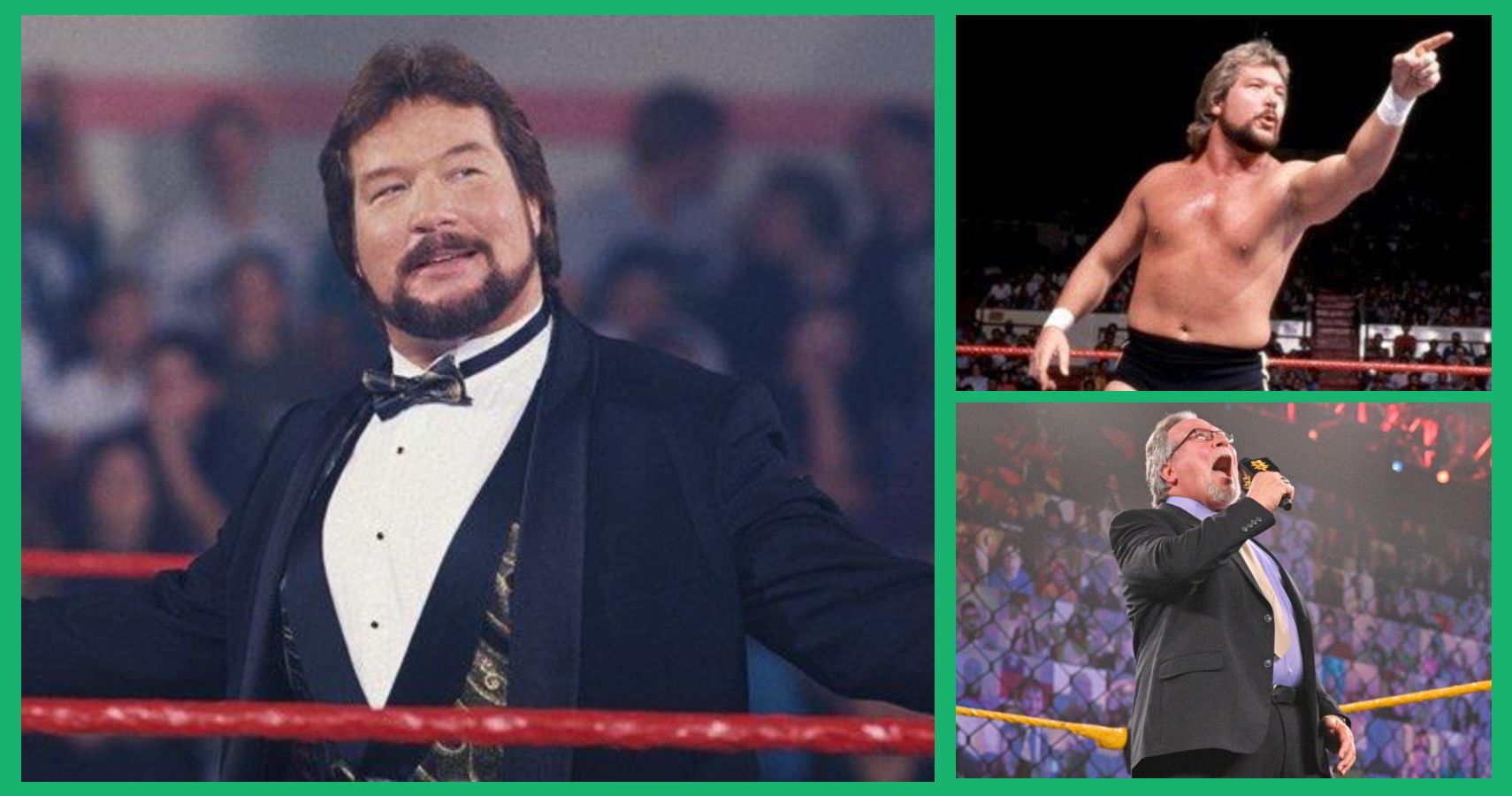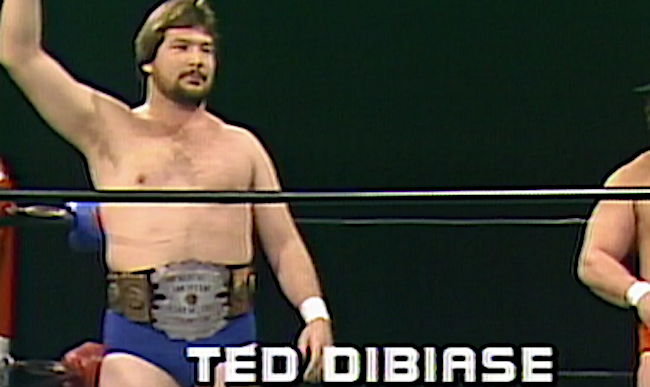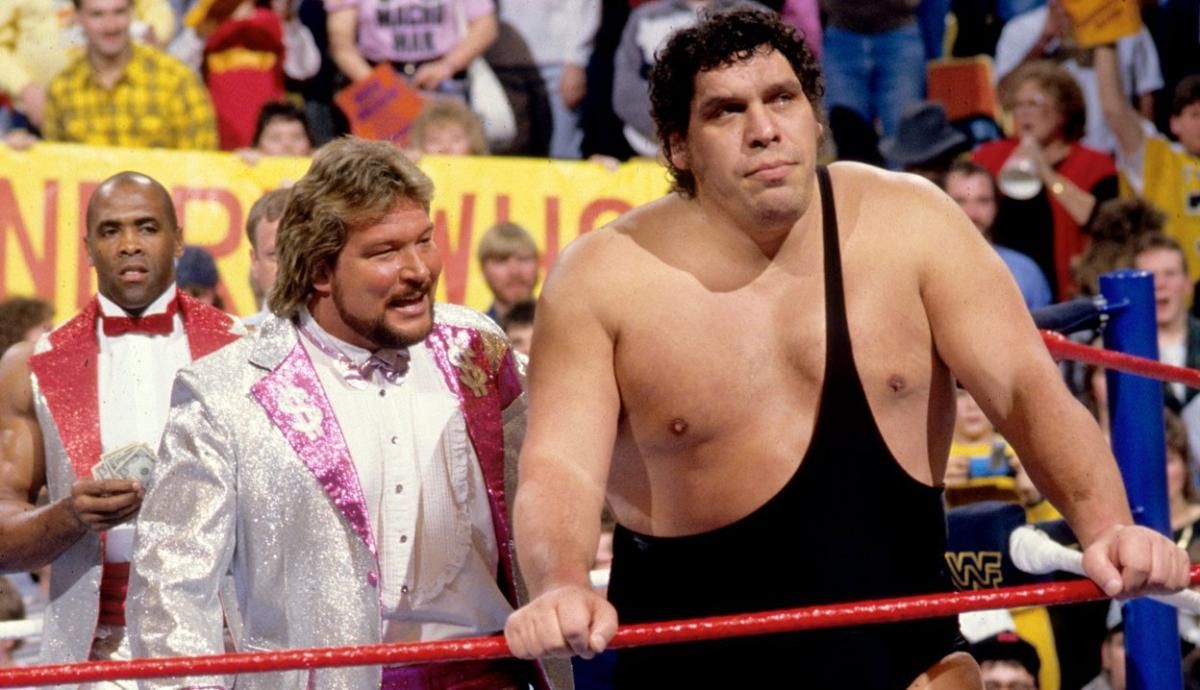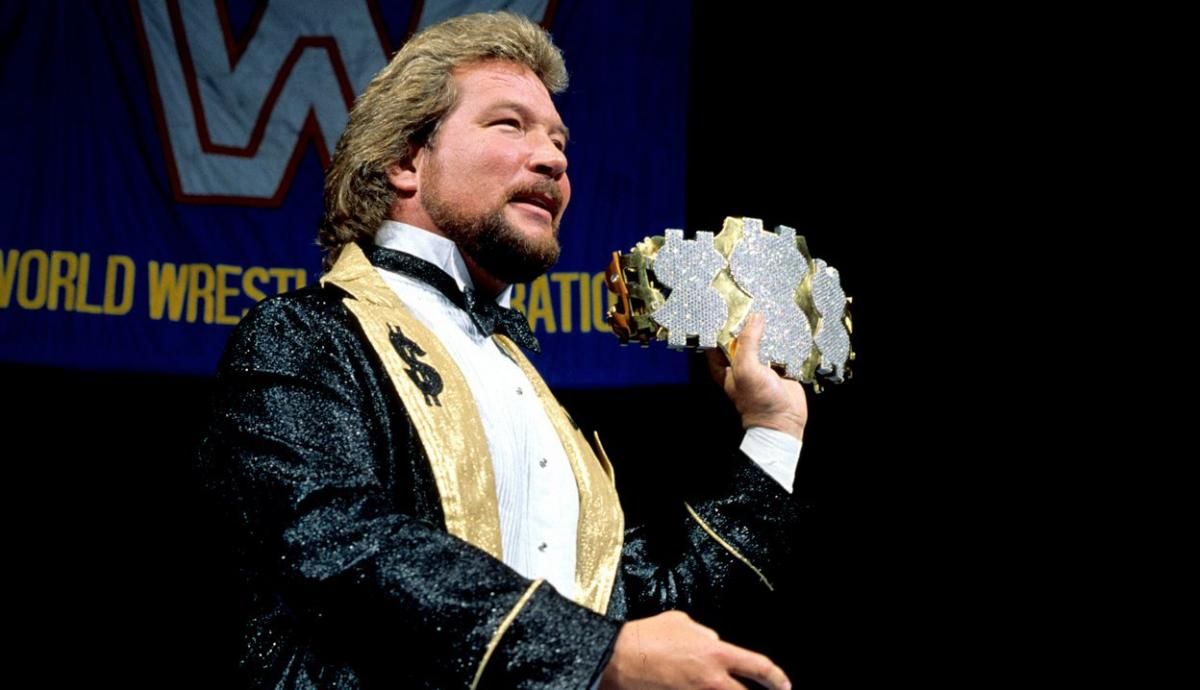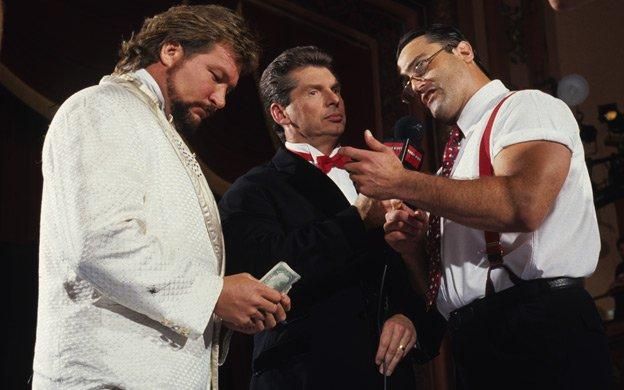If you've been watching NXT lately, you'll have noticed that WWE's black and gold brand has been a little more green thanks to a few cameos from WWE Hall Of Famer "The Million Dollar Man" Ted DiBiase. DiBiase retired from wrestling in 1993, but his legacy as one of the most memorable character in the history business looms large to this very day. WWE upstart Cameron Grimes is currently paying homage to "The Million Dollar Man" with his "wealthy crypto-bro" gimmick, which necessitated DiBiase's recent NXT appearances. The fact that he's being used to put young talent over 30 years after his retirement is a true testament to the value of DiBiase's Million Dollar legacy.
Let's revisit the historic career of pro-wrestling's original money man.
Ted DiBiase's Mid-South Beginnings
From a young age, Ted DiBiase lived and breathed pro-wrestling due to the fact that both his mother and father were professional wrestlers. Ted's mom was Helen Hild, one of the country's top female wrestling stars who who tussled with the the likes of Fabulous Moolah a time or two. Ted's adopted father was "Iron" Mike DiBiase, who tragically passed away in 1969 after suffering a heart attack in the ring. Ted was just 15 at the time.
Ted DiBiase was trained by the legendary Dory Funk Jr. and his also legendary brother, Terry Funk. He made is in ring debut as a referee in 1974, but soon caught the eye of Mid-South Wrestling owner Bill Watts. Watts saw value in having the son of "Iron" Mike DiBiase on his roster, and chose to promote Ted as Mike's son.
In Mid-South, a fiery feud with "Hacksaw" Jim Duggan endeared DiBiase to wrestling fans and earned him nationwide recognition. Ted's stock rose with every match in Mid-South, and eventually, he received offers from elsewhere.
Ted parted ways with Mid-South in 1979 and embarked on a brief adventure with Vince McMahon Sr.'s World Wrestling Federation. Though short, his first stint with the WWF involved some historic events. He was Hulk Hogan's first ever opponent at Maddison Square Garden, and on June 19, 1979, DiBiase lost the short-lived North American Championship to Pat Patterson. Patterson unified the title with the non-existent "South American Championship" and created the very same Intercontinental Championship that WWE still uses as its primary mid-card championship. Ted left the WWF shortly thereafter, and wouldn't return for another eight years.
After leaving the WWF, DiBiase wrestled for All Japan Pro Wrestling, the National Wrestling Alliance, and returned to Mid-South for a second stint. But his reputation wouldn't truly skyrocket until 1987 when he rejoined the WWF, which was now owned by none other than Vincent Kennedy McMahon.
WWF's Million Dollar Man
In 1987, WWF was a very different company to the one DiBiase had walked away from eight years prior. Ted was now an experienced performer who had wrestled in front of thousands of fan all over the world. But that wasn't enough. He needed a unique selling point. He needed a gimmick.
WWF's owner Vince McMahon wanted DiBiase to portray and arrogant, cocky, spoiled millionaire who flashed his cash and bribed anyone and everyone who could be bribed.
"The Million Dollar Man the character is actually a Vince McMahon original," DiBiase told Ring Rust Radio in 2017. "It was presented to me and Vince kind of started laying it out. In a moment when he was called away and I was just sitting there with Pat Patterson who at the time was his right-hand man, Pat looked at me and said, ‘Ted, if Vince can be a character in his own show, this is it, this is who he would be.’ It had never been done before. Vince said, ‘I chose you because you’re articulate; you carry yourself well; you interview very well; you are a great wrestler; you’re perfect for this.'”
Throughout his career, Ted had developed a reputation as a solid worker and somebody who knew how to thrill a crowd with athleticism alone. But hamming it up for TV cameras by portraying a maniacal millionaire caricature was an entirely new experience. But even though the stage at his feet was far larger than any he trodden on before, DiBiase excelled. Thanks to a series of on-location skits in which he used his cash to get his own way (such as the time he paid everyone to leave a public pool so he could have it to himself) "The Million Dollar Man" became the most despised character in the industry. It really was a million dollar gimmick.
Andre The Giant Sells Out
DiBiase's crowning achievement as the WWF's top heel occurred on February 5, 1988 at The Main Event. During the show, Andre the Giant defeated Hulk Hogan in controversial fashion and immediately sold the WWE Championship to DiBiase -- much to the chagrin of Hogan and every single fan in the arena.
The controversial finish to the match forced WWF president to determine that the title be vacated, which paved the way for a WWF Championship tournament at WrestleMania IV. DiBiase made it all the way to the final of the tournament, but was beaten by Randy Savage after Hogan interfered.
Of course, DiBiase was never officially recognized as WWF Champion. But the angle was huge, and it cemented "The Million Dollar Man" as one of the company's most legendary bad guys.
The Million Dollar Champion
Since he was unable to win the WWF Championship, DiBiase decided to use his cash to create a custom made championship belt of his very own: The Million Dollar Championship. Ted's custom belt was gold plated, made with cubic zirconia, with three small diamonds on the back. The kayfabe cost of the belt was a whopping but fitting $1,000,000 (although according to WWE executive Bruce Prichard, it actually cost around $50,000).
Much like DiBiase's WWF Championship reign, the Million Dollar Championship was never officially recognized by WWE, but it looked cool (well, '80's cool). And naturally, the concept of Ted being so arrogant and affluent that he was able to buy his own championship after failing to become an actual champion only made people hate him more.
The Million Dollar Championship would be utilized as a MacGuffin in several of Ted's most memorable rivalries, but he eventually cast it aside it when he won the WWF Tag Team Championship with his Money Inc. teammate Irwin R. Schyster in 1992.
Million Dollar Legacy
By 1993, DiBiase was plagued with injuries, and decided to hang up his boots. He wrestled his final match for WWE at 1993's SummerSlam, where he lost to Razor Ramon in the show's opener. However, Ted didn't immediately stop wrestling after his final match in WWE. He returned to All Japan for a short but busy three-month stint during which he worked multiple matches with Stan Hansen.
Upon returning to the United States, DiBiase remained on WWF television as a manager, and even managed an up-and-comer known as The Ringmaster, who would soon rebrand himself as "Stone Cold" Steve Austin.
In 1996, WCW came calling, and DiBiase jumped ship. His tenure at WCW is largely forgettable, but he was presented as the financier of the nWo.
Despite the rather damp ending to his wrestling career, and the less-than-stellar WCW stint, Ted DiBiase is remembered fondly by wrestling fans of a certain age due to his exceptional character work. He was the perfect man for the role, and made it his own. He took his rightful place in the WWE Hall of Fame on March 27, 2010. His induction served as the denouement for a fantastic career.
Watching a parent die in the ring would be enough to deter most kids from wanting to pursue a career in the wrestling business -- but not Ted DiBiase. After all, there was money to be made. And everyone has a price.

